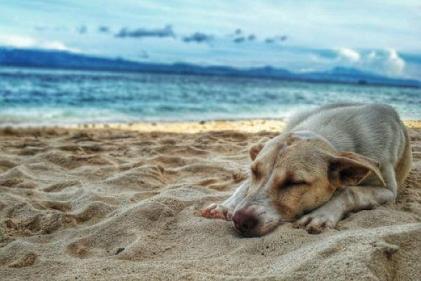 Overfeeding fish is so easy to do. Firstly, we forget how small they are. Secondly, feeding is one of the only ways we can interact with the fish, so we tend to do it too often. And lastly, fish quickly learn that our approach often means food is on the way. They come to the front and top of the tank, appearing eager and hungry.
Overfeeding fish is so easy to do. Firstly, we forget how small they are. Secondly, feeding is one of the only ways we can interact with the fish, so we tend to do it too often. And lastly, fish quickly learn that our approach often means food is on the way. They come to the front and top of the tank, appearing eager and hungry.
Overfeeding is definitely too much of a good thing, can lead to serious consequences, and can even be fatal for your fish.
The first step to avoiding overfeeding is to understand how easy it is to do, and how harmful it can be. This will give us the motivation to develop good habits when it comes to feeding our fish.
Try to incorporate the following tips to prevent overfeeding.
1. Feed on a schedule
Most pet fish will do well if fed twice daily. If possible, more frequent and smaller feedings are preferred. In the wild, most fish do not eat large "meals" like we do, but are foraging and "nibbling" throughout the day.
2. Feed the proper amount
The best way to determine how much to feed your fish is to observe them at periodic intervals while they feed. Add small amounts of food at a time (e.g., 3 flakes per fish). If all the food has been eaten within several minutes, feed a small amount more. The general rule of thumb is to only feed them as much as they can eat within 4-5 minutes. Anything not eaten after 5 minutes will likely never be eaten. As you observe your fish eating, check that all of them are eating. Some fish will eat within seconds, others, such as the scavengers, take more time.
3. Feed the proper food
Feeding an improper, poor quality, or stale food will not only lead to malnutrition, it will lead to more waste, since the fish will not eat it. Choose the appropriate form (e.g., flake or pellet) and the appropriate size based on the tank or pond inhabitants. Some fish will need floating food, while others prefer food that sinks. Research the feeding habits of your species, and feed accordingly. Be sure to use fresh, quality food. If switching to a new food, feed sparingly. Fish may take time to identify the new diet as food.
4. Remove uneaten food
If there is uneaten food left after a feeding, remove as much of it as possible with a siphon or fine net. Irregardless of the size of your filtration unit, it was not designed to correct all the problems associated with overfeeding. If you know or suspect overfeeding has occurred, perform a partial water change by siphoning 25% of the water from the bottom of the tank. Use the siphon to pick up as much debris from the substrate as possible.
5. Include scavenging creatures
Scavenger fish, like catfish and loaches, can help get rid of some the uneaten food that falls to the bottom of the tank or pond. They are not a "fix-all" but can be helpful in removing food that falls to inaccessible areas of the tank that may be difficult to siphon or clean.
6. Educate family members and pet-sitters
In general, it is best if only one family member feeds the fish. If such a schedule is not possible, use a simple log or calendar to mark off when the fish have been fed to avoid duplicate feedings. If somebody is going to be looking after your fish while the family is away, review the feeding instructions with them carefully, and pre-measure individual portions for them.
7. Use proper filtration
When designing your aquarium or pond, be sure to size your filtration units correctly; bigger is always better. Provide routine maintenance on your filtration system to ensure it is operating at peak efficiency.
Image via Pinterest.






